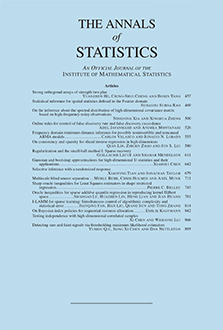Abstract
We suggest two new, translation-based methods for estimating and correcting for bias when estimating the edge of a distribution. The first uses an empirical translation applied to the argument of the kernel, in order to remove the main effects of the asymmetries that are inherent when constructing estimators at boundaries. Placing the translation inside the kernel is in marked contrast to traditional approaches, such as the use of high-order kernels, which are related to the jackknife and, in effect, apply the translation outside the kernel. Our approach has the advantage of producing bias estimators that, while enjoying a high order of accuracy, are guaranteed to respect the sign of bias. Our second method is a new bootstrap technique. It involves translating an initial boundary estimate toward the body of the dataset, constructing repeated boundary estimates from data that lie below the respective translations, and employing averages of the resulting empirical bias approximations to estimate the bias of the original estimator. The first of the two methods is most appropriate in univariate cases, and is studied there; the second approach may be used to bias-correct estimates of boundaries of multivariate distributions, and is explored in the bivariate case.
Citation
Peter Hall. Byeong U. Park. "New methods for bias correction at endpoints and boundaries." Ann. Statist. 30 (5) 1460 - 1479, October 2002. https://doi.org/10.1214/aos/1035844983
Information





